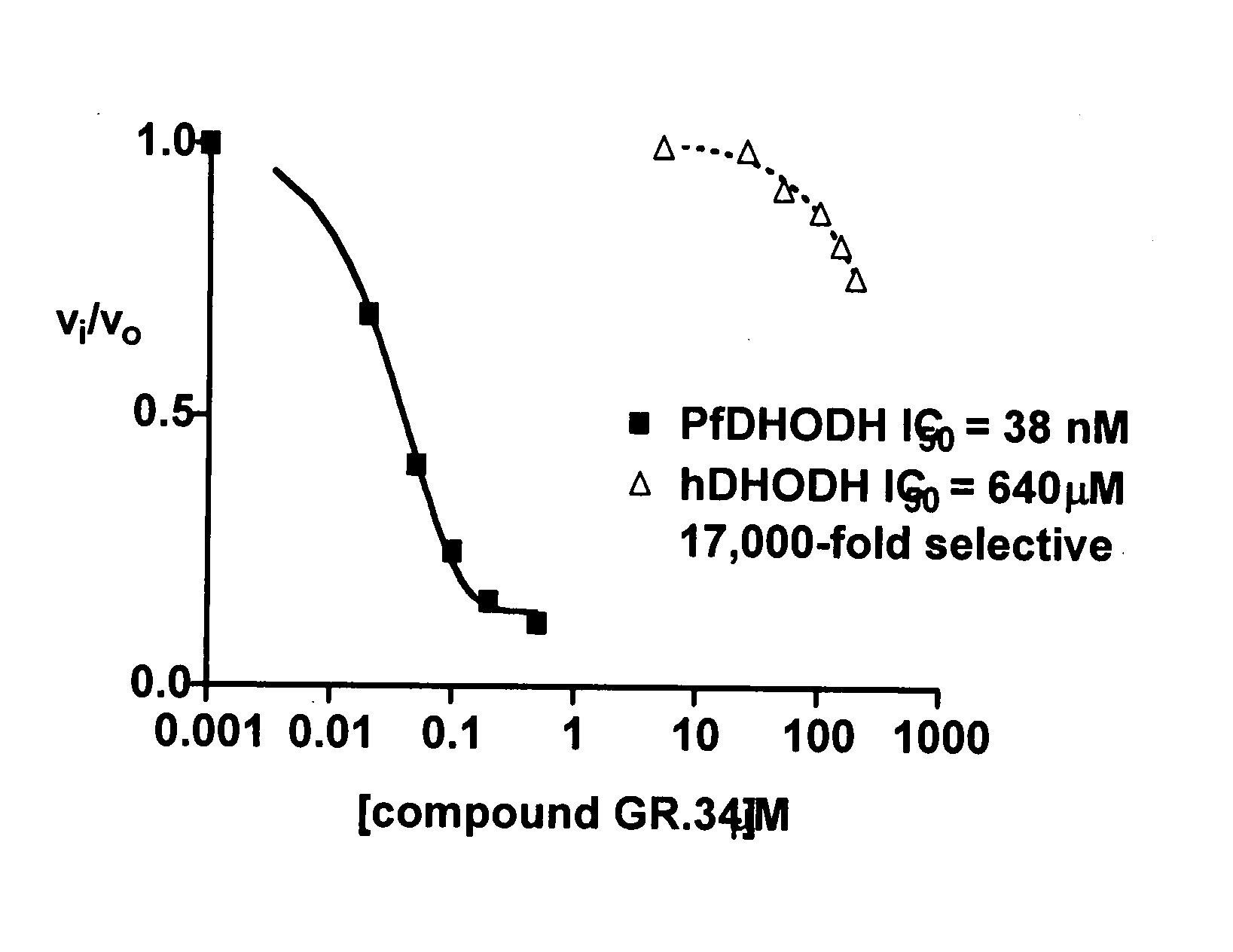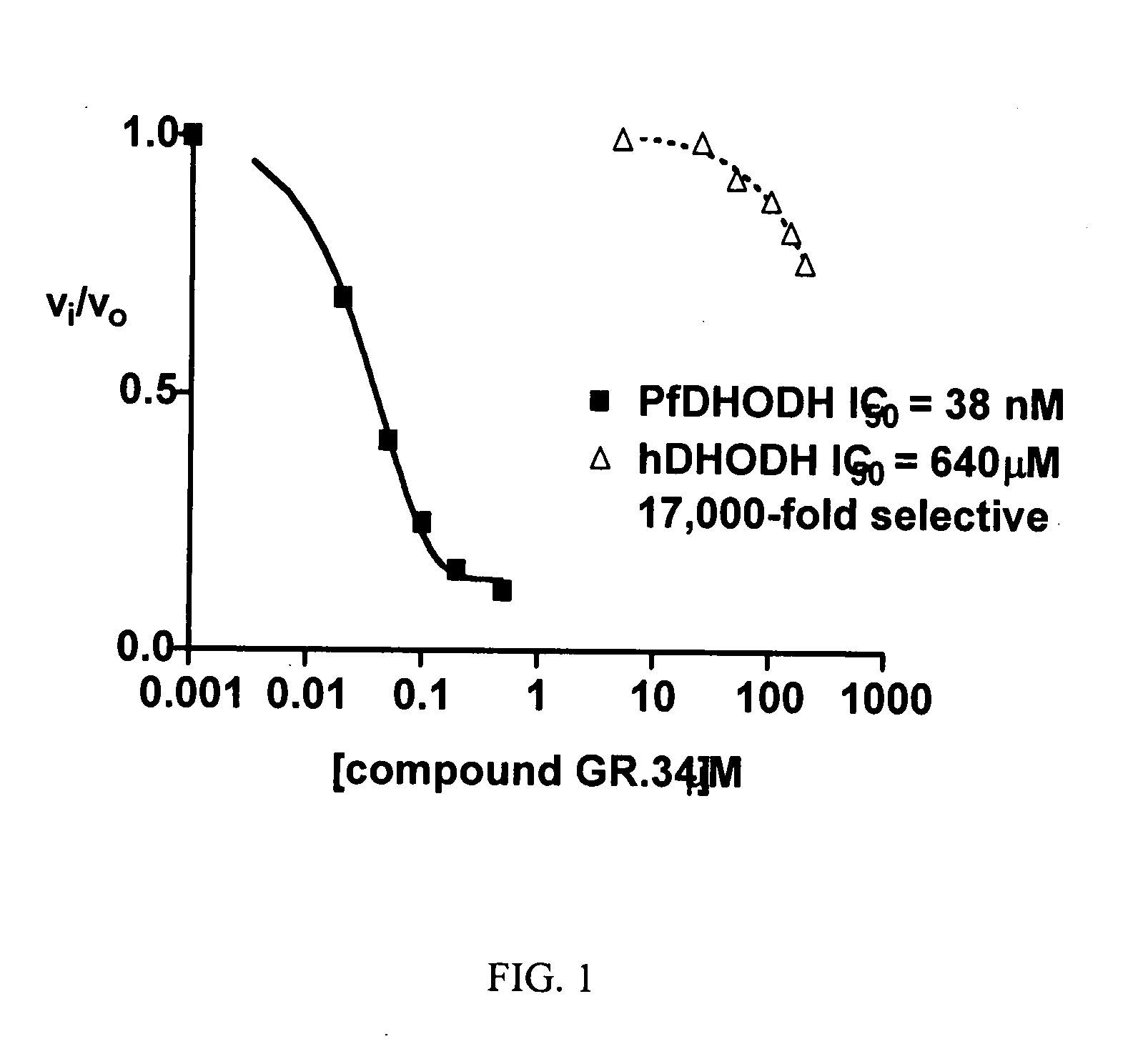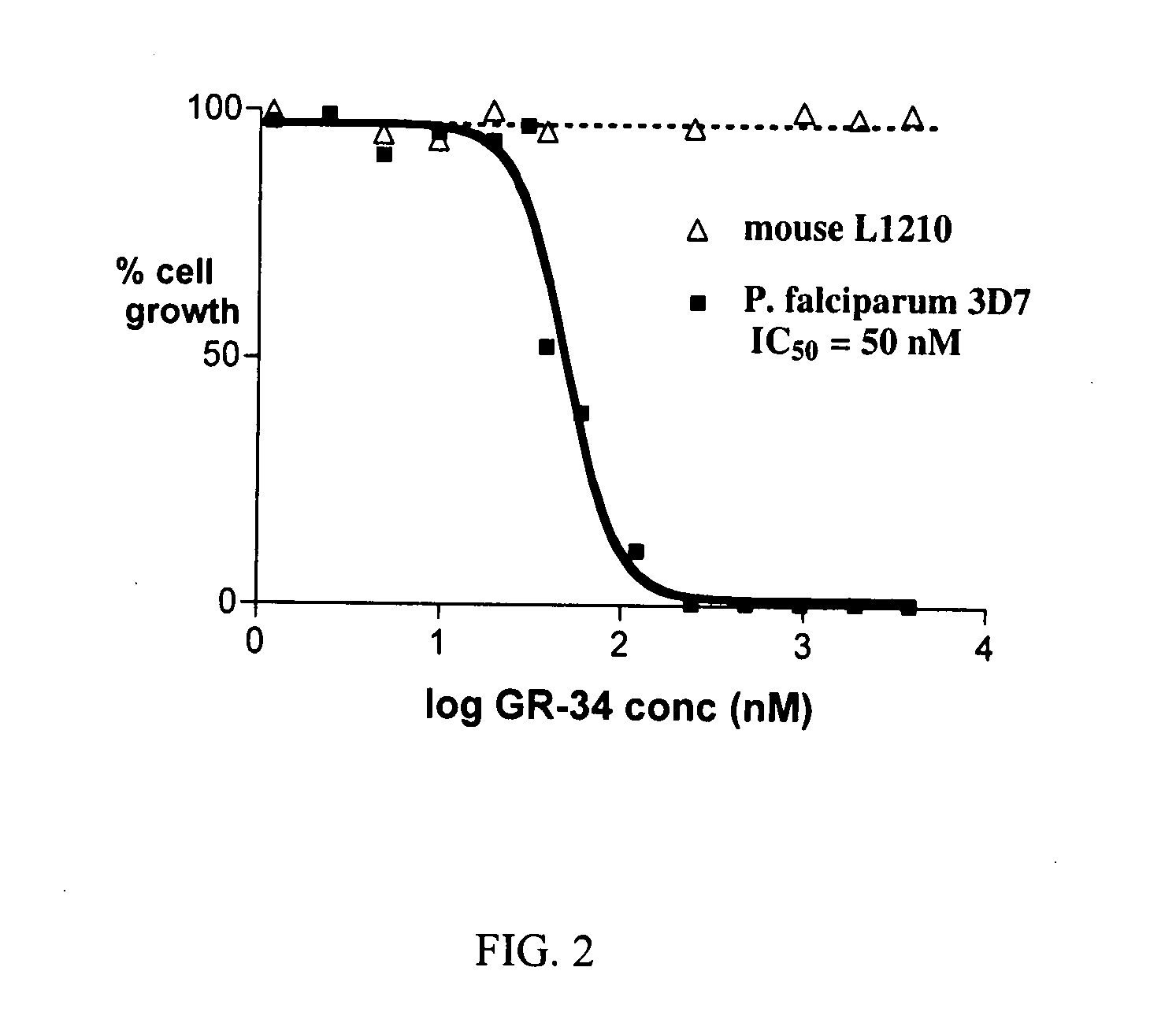Dihydroorotate dehydrogenase inhibitors with selective Anti-malarial activity
a dihydroorotate dehydrogenase and inhibitor technology, applied in the direction of biocide, drug composition, organic chemistry, etc., can solve the problems of clinical symptoms, risk of contracting disease in travelers to endemic regions, and rupture and subsequent reinfection of other red blood cells
- Summary
- Abstract
- Description
- Claims
- Application Information
AI Technical Summary
Benefits of technology
Problems solved by technology
Method used
Image
Examples
example 1
Synthesis of 5-methyl-N-(naphthalen-2-yl)-[1,2,4]triazolo[1,5-a]pyrimidin-7-amine
[0098] The following synthesis, yielding a compound designated “GR-34” (see Table 1), illustrates how all compounds as herein described are produced, in accordance with the present invention.
[0099] 5-Methyl-[1,2,4]triazolo[1,5-a]pyrimidin-7-ol: A mixture of 0.942 g (11.20 mmol) 1,2,4-triazole and 1.458 g (11.20 mmol) of ethyl acetoacetate was heated under reflux in 10 mL of acetic acid for 3 hours. The reaction then was cooled to room temperature. A white solid was isolated by filtration, washed with water, and dried under vacuum to give the product with 58% (0.976 g) yield.
[0100] 7-Chloro-5-methyl-[1,2,4]triazolo[1,5-a]pyrimidine: To 0.976 g (6.50 mmol) 5-Methyl-[1,2,4]triazolo[1,5-a]-pyrimidin-7-ol, in a round bottom flask, was added 1.82 mL (19.50 mmol) of phosphorus oxychloride, and the mixture was heated under reflux for 30 minutes, during which time the solid dissolved and hydrogen chloride ev...
example 2
Procedures Useful for the Biological Evaluation of the Compounds of Formula I
[0102] In addition to the extensive literature disclosing the role of DHOHD in malaria, described here are assays useful for testing the compounds of Formula I of the present invention.
Assays
[0103] Measurement of enzyme inhibition. For studying inhibition of Plasmodium or human DHODH enzyme, two assays that are in routine use are described, for example, in Baldwin, et al. (2002) J Biol Chem., 277, 41827-41834, and Baldwin, et al. (2005) J. Biol. Chem., 280. 21847-21853. Briefly, these assays are as follows: 1) A calorimetric assay thay that monitors 2,6-dichloroindophenol (DCIP) reduction at 600 nm (e=18.8 mM−1 cm−1) is performed as either a continuous assay where absorbance is recorded over time. The assay solution containing 100 mM HEPES, pH 8.0, 150 mM NaCl, 10% glycerol, 0.05% Triton X-100,20 mM CoQ0 (coenzyme QD), 200 mM L-dihydroorotate, and 120 mM DCIP. Reactions are initiated by addition of enzy...
PUM
| Property | Measurement | Unit |
|---|---|---|
| Volume | aaaaa | aaaaa |
| Volume | aaaaa | aaaaa |
| Molar density | aaaaa | aaaaa |
Abstract
Description
Claims
Application Information
 Login to View More
Login to View More - R&D
- Intellectual Property
- Life Sciences
- Materials
- Tech Scout
- Unparalleled Data Quality
- Higher Quality Content
- 60% Fewer Hallucinations
Browse by: Latest US Patents, China's latest patents, Technical Efficacy Thesaurus, Application Domain, Technology Topic, Popular Technical Reports.
© 2025 PatSnap. All rights reserved.Legal|Privacy policy|Modern Slavery Act Transparency Statement|Sitemap|About US| Contact US: help@patsnap.com



